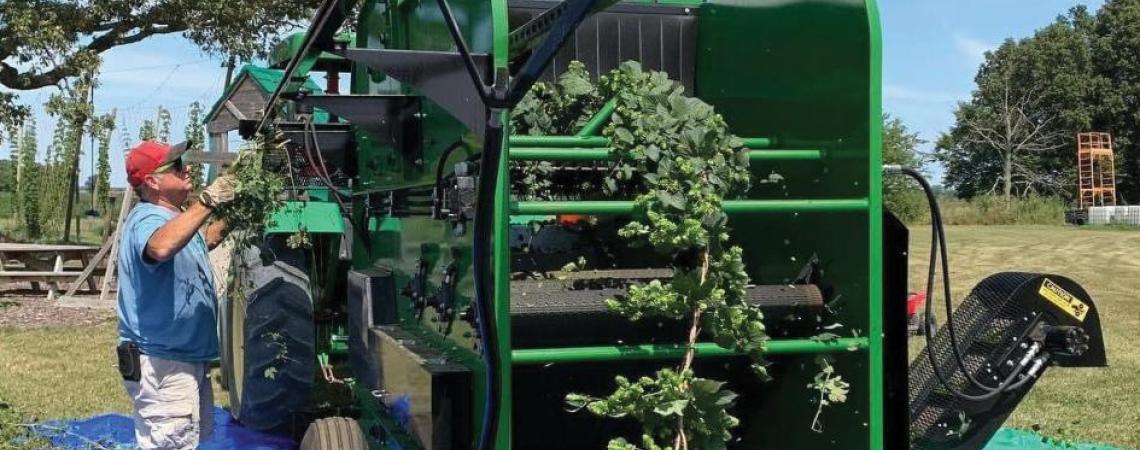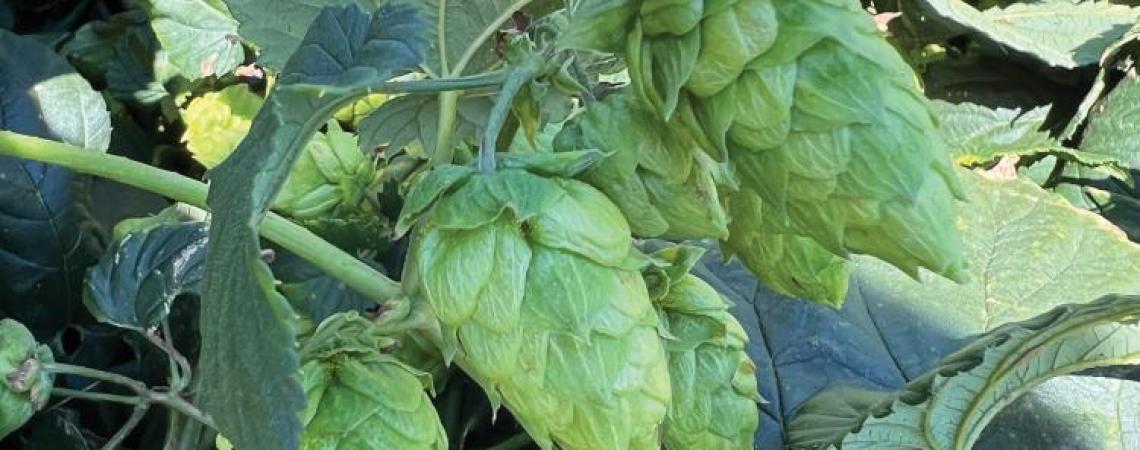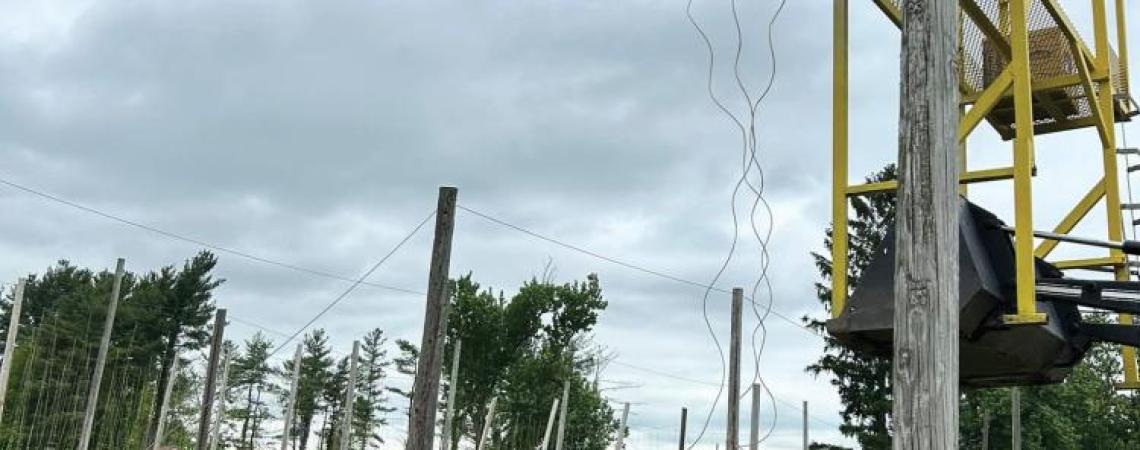According to the Ohio Craft Brewers Association, there were 434 craft breweries in the state of Ohio at the end of 2023. More are opening all the time.
And that gigantic growth curve has created an equally growing opportunity for a number of Ohio farmers: Those breweries need hops.
The harvester separates the cones from the rest of the plant.
Hops add bitterness to balance the sweetness of malt in beers. Different varieties of hops contain varying levels of oils and acids, and those are what give beers their distinct flavors.
“Different breweries want different varieties of hops,” says Amy Berridge, a member of Kenton-based Mid-Ohio Energy Cooperative. Berridge, her mother, Rubiana Berridge, and her sister, Lori Tucker, own Three Chicks Farm in Morral, in Marion County. In 2014, Three Chicks added hops to its lineup of crops, which also includes soybeans, wheat, alfalfa hay, and Christmas trees.
“When we were considering growing hops, they told us that it would be easy and make a lot of money,” Amy Berridge says. “It is neither.”
Logan Minter, associate professor and extension and field specialist for specialty crops at Ohio State University’s South Center, says hops grew wild in Ohio until Prohibition, but then hop production shifted to northwestern states. Part of Minter’s research now involves finding and cultivating wild hop plants. He hopes to find strains that are more resistant to insects or have other beneficial properties.
Minter confirms that, while hop acreage in Ohio has increased in the last 10 years, the number of those growing the stuff has declined despite the demand. “First, it’s a labor-intensive crop,” he says. “Then there is a relatively high installation cost, and a significant annual operations cost after that.”
Minter says with all that initial investment, it takes about three years for a farmer to break even, and only then will most farmers begin to make a profit from their work; Berridge says that was her experience as well.
The hop yard at Three Chicks Farm measures three-quarters of an acre. They began with small, established plants their first year, and those plants took about three years to develop enough roots to produce a full crop. They’ve since added a second variety. Once established, Minter says, hop plants will produce a crop for 25 years or more, though they are susceptible to various diseases and pests and require a certain vigilance.
The plant itself is referred to as a hop; its flowers are the hops that flavor your brewski. Hops flowers are referred to as cones, because they look like small green pine cones. The cones grow on bines (bines, not vines) that are supported on strings. Some growers use strings made of coir from coconuts, but Three Chicks uses special hop strings made of paper. Metal cables hold the strings to wooden poles or trellises that stand 16 to 20 feet tall.
For the September harvest, “we cut off the bines close to the ground and untie them from the trellises,” Berridge says. “Then the bines and strings go through a mechanical harvester that separates the cones and sends them out the side.”
Berridge says that most breweries want the cones in pellet form for efficiency and consistency. So after the cones are removed from the bines, they are sent away to be dried, converted into pellets, and then put in bags to be sold.
While breweries are the major customers for hops, there are other uses. The citrus-like scent of the cones makes them suitable for some cosmetics. Tea made from hops (Berridge’s verdict: “not bad”) can promote sleep. Hops can be used to flavor food as well.
“We made some macaroons with hops,” Berridge says. “They were really good and won first place at the Marion County Fair.”
As labor-intensive as it is to grow hops, Berridge says, selling them is even harder. “You have to sell directly to your customers, to build relationships with them, because there is no central marketplace for hops,” she says. To that end, Berridge is also a member, and treasurer, of the Ohio Hop Growers Guild, which has about 70 members who can lean on one another for help with everything from pest control to sales and marketing. The guild connection led Three Chicks to an arrangement with another hop farm to sell its hops.
And even with cooperation among the guild, Minter sums up hop growing and beer production: “It’s a lot easier to drink beer than it is to make it.”












